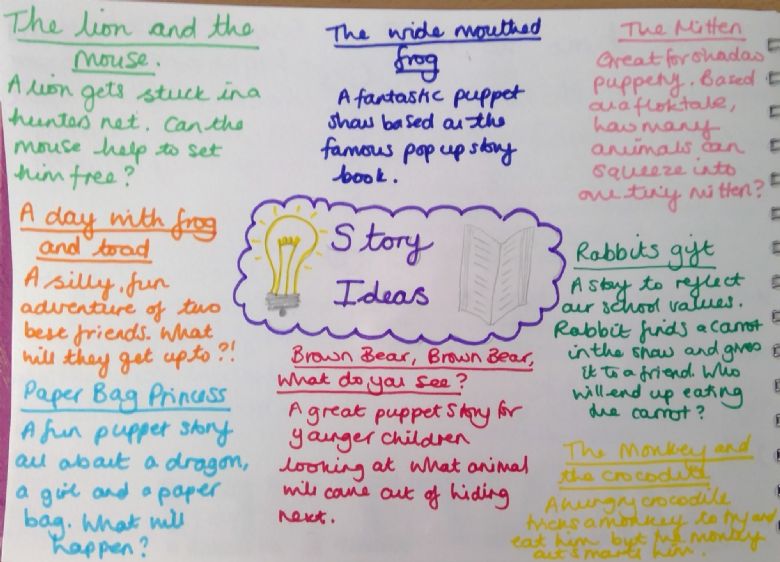Tuesday 2nd June 2020
|
Time |
Learning |
|
9-9:30 |
Joe Wicks virtual PE – bodycoachtv on youtube.com |
|
9:30 – 9:50 |
If you are a Lexia person you must complete Lexia during this time instead of guided reading. Those of you doing the guided reading, there are questions related specifically to understanding the text and there is a n activity based around a SPaG focus. Try to complete both if you can but if you run out of time do not worry. Where the questions are about the text, there is the letter AF and a number at the end. This just identifies which reading skill is being focussed on and is nothing for you to worry about. The answers are at the bottom of the sheet so that you can mark your work. |
|
9:50-10:30 |
LO: to recognise 3D shapes in different orientations. SC1: I can recognise 3D shapes from the faces I can see. SC2: I can recognise 3D shapes from the edges I can see. SC3: I can recognise 3D shapes from the vertices I can see. Where Does It Go? Carroll Diagram: Using the slide on the Lesson Presentation, sort different 3D shapes according to their properties on a Carroll diagram. Viewpoint: Demonstrate how to identify 3D shapes in different orientations by looking at the edges, faces and vertices that can be seen, and identifying those that are hidden. Shape Detective: complete the Shape Detective Activity Sheet. Looking at a 3D shape in different orientations, identify what faces, edges and vertices can be seen, and which are hidden by the perspective. Shape Search: - Choose your challenge. 1 star is the easiest and 3 star is the hardest. If you choose a challenge and it is too hard, don’t finish it, swap to an easier one. Similarly, if you choose one that is too easy, swap to a harder one. Think about which star challenge I normally give you at school. If you finish this and you want an extension, I have added one but do not spend ages doing this. Only do the extension is you have time. This will really work on your justification and reasoning which is a very important part of your maths curriculum. Year 4 you should definitely give this a go if you have time. Where Does It Go? Venn Diagram: Using the slide on the Lesson Presentation, sort different 3D shapes according to their properties on a Venn diagram. |
|
10:30-11:00 |
Break time/snack time |
|
11:00 – 11:45 |
LO: to explain that we need light to see things and that dark is the absence of light. SC1: I can identify a range of light sources. SC2: I can explain that dark is caused by the absence of light. SC3: I can explain that I need light to see things. Have a look at this before you start on the presentation: https://www.bbc.co.uk/bitesize/topics/zbssgk7/articles/z2s4xfr Sources of Light: Look at the Lesson Presentation which explains light sources and think about some examples. The children should look around them and start to identify light sources. Light Source Sorting Game: Using the Light Sources Sorting Game Activity Sheet, sort the sets of cards into objects that are light sources and those that are not. Light Source Sorting Game - The Tricky Ones! Use the Lesson Presentation to explain the reason why tricky objects like the moon, a window and a mirror are not light sources. What Is Dark? Dark is essentially the absence of light. Think about their own experiences of dark, such as places that are dark, or times that it is dark. Which light sources are absent in these places or at these times in order to make it dark. Can we see in the dark? We cannot see in complete darkness, but it is rare to find this. There is often light from street lamps, a night light etc. that allows us to see objects, but not as clearly as in full light. Activity Sheet. Light and Dark: Children should complete their Light and Dark Activity Sheet to show what they have learnt in the lesson. |
|
11:45- 12:15 |
TTRockstars Make sure you do at least one sound check and one studio session. Try to get as many right as you can in the fastest time possible. Remember you want to be aiming for less than 6 seconds to answer a question correctly. |
|
12:15- 1:15 |
Lunch |
|
1:15- 2:00 |
LO: to investigate which materials block light to form shadows. SC1: I can explain how light travels. SC2: I can sort different materials according to whether they are opaque, transparent or translucent. SC3: I can use these materials in an investigation into different shadows. Watch this before starting:
Light: Explain how light travels using the Lesson Presentation. Set up a model demonstrating that light travels in a straight line. Using three pieces of card with a hole punched in each one, they can shine a torch through the holes when they are in a straight line. Ask what happens when the holes in the card do not line up. Blocking Light: Explain and discuss opaque, translucent and transparent objects, focusing on the fact that opaque objects block light. Look around the house to name objects that are opaque, transparent or translucent. What’s the Use? Looking at the statements on the Lesson Presentation, decide if each item would be best made out of an opaque, translucent of transparent material. Making Shadows: Use the Lesson Presentation to explain how opaque objects block light, creating shadows. Choosing Materials: a boy wants to choose a material to make some new curtains for his baby sister’s bedroom. The curtains need to block light so that the baby doesn’t wake up too early. Can you test different materials by shining a torch onto different materials and observing the shadow it creates? Decide if each material is opaque, translucent or transparent. Which Material Is Best? Decide which material would be best for the curtains. Write an explanation of why they chose this material, referring to their investigation. |
|
2:00- 2:30 |
Exercise – e.g. mindfulness yoga, fresh air in the garden, run up and down the stairs seeing if you can get faster every time! |
|
2:30-3:00 |
Story ideas: LO: to generate ideas for a puppet show story SC1: I can understand why my story ideas for a puppet idea need to be simple SC2: I can explain that my story must have a good beginning, middle and end SC3: I can come up with more than one idea to choose from A puppet story should be short, interest and engage the person watching. Therefore, the characters must make sense and there has to be an interesting plot. Often these stories are based on fables or have a moral to them so that people can get a meaning from the story in a short amount of time. Have a look at some of the stories on this webpage that are suggested puppet stories. See if you can see any similarities between them. https://hpl.bibliocommons.com/list/share/79823321/81592210 Once you have got a feel for the type of stories that are good for puppetry, start to think about your own story possibilities. At the moment you are not planning it, just generating lots of ideas that you can choose from. When you are ready, create a spider diagram of as many ideas as you can think of. Add pictures, key words and notes to any that need a little extra detail or particularly stand out to you. Remember, we can always borrow ideas from things we have read or seen to help us come up with the best possible idea.
|
|
3:00 – 3:15 |
Federation Story Time – The Ice Monster read by Me!!
|




